
f Ritual
The Parallel Universe
CURZON SUFI SERIES
Series Editor: Ian Richard Netton
Professor of Arabic Studies
University of Leeds
The Curzon Sufi Series provides short introductions to a variety of facets of the subject, which are accessible both to the general reader and the student and scholar in the field. Each book will be either a synthesis of existing knowledge or a distinct contribution to, and extension of, knowledge of the particular topic. The two major underlying principles of the Series are sound scholarship and readability.
BEYOND FAITH AND INFIDELITY
The Sufi Poetry and Teaching of Mahmud Shabistari
Leonard Lewishon
AL-HALLAJ
Herbert W. Mason
RUZBIHAN BAQLI
Mysticism and the Rhetoric of Sainthood in Persian Sufism
Carl W. Ernst
ABDULLAH ANSARI OF HERAT
An Early Sufi Master
A.G. Ravan Farhadi
THE CONCEPT OF SAINTHOOD IN EARLY ISLAMIC MYSTICISM
Bernd Radtke and John OKane
SUHRAWARDI AND THE SCHOOL OF ILLUMINATION
Mehdi Amin Razavi
PERSIAN SUFI POETRY
An Introduction to the Mystical Use of Classical Poems
J.T.P. de Bruijn
AZIZ NASAFI
Lloyd Ridgeon
SUFIS AND ANTI-SUFIS
The Defence, Rethinking and Rejection of Sufism in the Modern World
Elizabeth Sirriyeh
The moral right of the author has been asserted
First Published in 2000 by Curzon Press
This edition published 2013 by Routledge
2 Park Square, Milton Park, Abingdon, Oxon, OX14 4RN
711 Third Avenue, New York, NY 10017
Routledge is an imprint of the Taylor & Francis Group, an informa business
2000 Ian Richard Netton
Typeset in Horley Old Style by LaserScript Ltd, Mitcham, Surrey
All rights reserved. No part of this book may be reprinted or reproduced or utilised in any form or by any electronic, mechanical, or other means, now known or hereafter invented, including photocopying and recording, or in any information storage or retrieval system, without permission in writing from the publishers.
British Library Cataloguing in Publication Data
A catalogue record of this book is available from the British Library
Library of Congress Cataloguing in Publication Data
A catalogue record for this book has been requested
ISBN 978-0-7007-1242-7 (hbk)
For Sue with much love
Other Books by Ian Richard Netton
Across the Mediterranean Frontiers (Editor with D. A. Agius)
Allah Transcendent: Studies in the Structure and Semiotics of Islamic Philosophy, Theology and Cosmology
Arabia and the Gulf: From Traditional Society to Modern States (Editor)
Al-Farabi and His School
Golden Roads: Migration, Pilgrimage and Travel in Mediaeval and Modern Islam (Editor)
Hunter of the East (Vol. 1) (Editor)
Middle East Materials in United Kingdom and Irish Libraries: A Directory (Editor)
Middle East Sources (Editor)
Muslim Neoplationists: An Introduction to the Thought of the Brethren of Purity
A Popular Dictionary of Islam
Seek Knowledge: Thought and Travel in the House of Islam
Text and Trauma: An East-West Primer
Contents
4 Unveiling the Sacred 1: The Five Arkn
This book attempts to lift the veil to which Fitzgeralds paraphrase of the Rubaiyat of Omar Khayyam alludes, at least insofar as it may be referred to the arena of f ritual. It examines both the sphere of mainstream Islamic ritual, as articulated primarily in the arkn, and the more arcane and lesser known field of ritual in ta

awwuf. The book makes comparisons both within dr al-Islm and between that tradition and the rituals of other traditions. It neither attempts to be inclusive and to cover every single aspect of fism and its rituals, nor to cover every single f Order. Two Orders have been taken as case studies and in the process of examining them, I have examined their origins, rituals and practices, organisations and hierarchy, initiation practices and what may be termed here their Rules of Life. Particular attention has been paid to liturgy as it is to be found especially in dhikr and sam

, and the related practices of fikr, murqaba, mu

saba, wird, rbita, and suhba. The word ritual itself has been deployed loosely but not in such a cavalier fashion, I hope, as to offend the purists among the anthropologists. Four primary lens have been used, for comparative and analytical purposes: those of theology, phenomenology, anthropology and semiotics. It is the contention of this book that the practice of f ritual leads, paradoxically, to a fundamental alienation which is, nonetheless, devoutly to be wished for, at least by the ardent f practitioner.
As always, I have incurred many debts in the writing of this volume. I thank, firstly, Dr Javad Nurbakhsh, present Master of the Nimatullh Order, for his generous hospitality to me on two occasions in the Ni

matullhi Khnaqh in London. Except where I have quoted from, or referred to, his many works on fism, he is not responsible for what is written here. I am grateful to other members of that Khnaqh, and others, who would wish to remain nameless, for wise advice and encouragement. The writings of Professor H Algar have proved an invaluable guide in walking through the veritable forests of materials dealing with the Naqshbandiyya. He is acknowledged in my footnotes. Finally, I thank my wife and family for their indulgence and patience as I completed yet another book; I am grateful to them for keeping me earthbound as I explored the arcane highways of f ritual.
| EI | Encyclopaedia of Islam, second edition |
| EIS | Shorter Encyclopaedia of Islam |
| JSS | Journal of Semitic Studies |
| Q. | Qurn |
| RB | Rule of St Benedict |
| SOAS | School of Oriental and African Studies, University of London |
1
Introduction
There was a Door to which I found no Key:
There was a Veil past which I could not see:
Some little talk awhile of ME and THEE
There seemd and then no more of THEE and Me.
Even after the achievement of the scholar-f Ab mid al-Ghazl (1058-1111) in largely removing the tension between fism and the Islamic sciences,
The suspicion from mainstream Islam comes in many forms as do the f orders themselves. In the course of Islamic history fs have appeared in nearly every corner of the globe where the message of Islam has been preached; indeed, they were often responsible for bringing that message to what had been non-Islamic lands, in the first place.
This book surveys different manifestations of the ritual aspects of fism, taking two major Orders as case studies. While the state of fism in contemporary Britain is not its primary focus, there will be some references to the British scene by way of illustration. And since ritual is the principal topos, f spirituality in its diverse aspects such as states (a



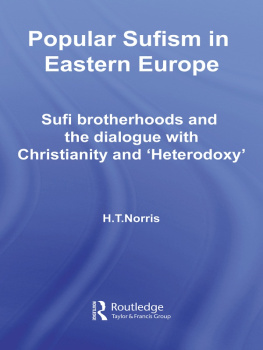
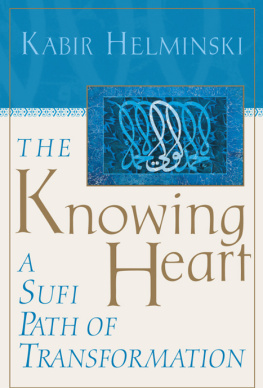

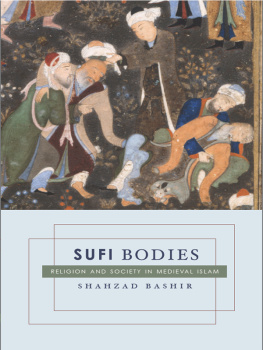
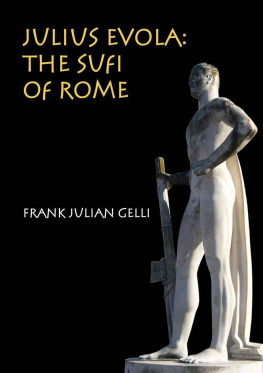
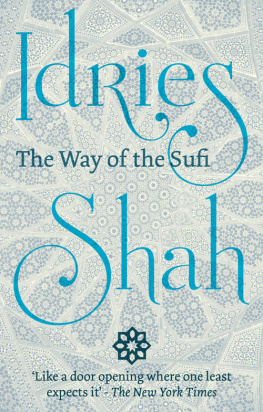

 awwuf. The book makes comparisons both within dr al-Islm and between that tradition and the rituals of other traditions. It neither attempts to be inclusive and to cover every single aspect of fism and its rituals, nor to cover every single f Order. Two Orders have been taken as case studies and in the process of examining them, I have examined their origins, rituals and practices, organisations and hierarchy, initiation practices and what may be termed here their Rules of Life. Particular attention has been paid to liturgy as it is to be found especially in dhikr and sam
awwuf. The book makes comparisons both within dr al-Islm and between that tradition and the rituals of other traditions. It neither attempts to be inclusive and to cover every single aspect of fism and its rituals, nor to cover every single f Order. Two Orders have been taken as case studies and in the process of examining them, I have examined their origins, rituals and practices, organisations and hierarchy, initiation practices and what may be termed here their Rules of Life. Particular attention has been paid to liturgy as it is to be found especially in dhikr and sam , and the related practices of fikr, murqaba, mu
, and the related practices of fikr, murqaba, mu saba, wird, rbita, and suhba. The word ritual itself has been deployed loosely but not in such a cavalier fashion, I hope, as to offend the purists among the anthropologists. Four primary lens have been used, for comparative and analytical purposes: those of theology, phenomenology, anthropology and semiotics. It is the contention of this book that the practice of f ritual leads, paradoxically, to a fundamental alienation which is, nonetheless, devoutly to be wished for, at least by the ardent f practitioner.
saba, wird, rbita, and suhba. The word ritual itself has been deployed loosely but not in such a cavalier fashion, I hope, as to offend the purists among the anthropologists. Four primary lens have been used, for comparative and analytical purposes: those of theology, phenomenology, anthropology and semiotics. It is the contention of this book that the practice of f ritual leads, paradoxically, to a fundamental alienation which is, nonetheless, devoutly to be wished for, at least by the ardent f practitioner.